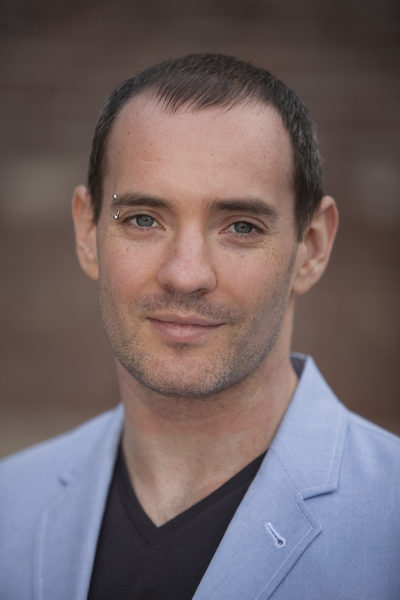Bigot or Champion of Truth?
Vice founder Gavin McInnes on his notorious do's and don'ts and more
To look at him, you wouldn’t know Gavin McInnes is the wealthy head of a “multinational brand.” You might mistake him for an average thirtysomething, though – one whose earlier indiscretions are responsible for a few too many trips to the tattoo parlour. Last year, at a book reading in Chicago, he appeared on stage wearing only what looked to be shit-stained tighty whities and, later, a cartoonish turban and Osama bin Laden T-shirt.
McInnes was in Chicago to promote Dos and Don’ts, a collection he wrote over the 10 years Vice magazine has been in existence.
Vice, a magazine that started in Montreal as a free newsletter called Voice, was originally funded by a Quebec make work program for welfare recipients. Now, ten years later, it’s a successful international giveaway magazine based in New York, running everything from fashion boutiques to a record company.
Vice is supposed to be subversive and, above all, anti-boomer. As McInnes put it in an interview with the CBC last year, boomers “made us leave our homeland.”
It is Vice‘s nature to be controversial – without it, the magazine couldn’t survive. Though McInnes, and co-founders Shane Smith and Suroosh Alvi, are often criticized by leftists, conservatives, and hipster New Yorkers, the consensus is that Vice gives an accurate account of counterculture.
But it’s not necessarily the kind of counterculture many people are familiar with. In August 2003, McInnes wrote a column in The American Conservative, a magazine run by Pat Buchanan. In the magazine, he called young people a bunch of knee-jerk liberals (a phrase McInnes and his cronies use often) who’ll believe anyone with dark skin over anyone with light skin. He laments the liberal views of most of the people who pick up his magazine, saying they’re “brainwashed by communist propaganda.”
“The AmCon article was about jolting our readers out of their blind obsession with everything left,” McInnes wrote me in an email sent from his Costa Rica home. “The right has a lot of valuable lessons that we can glean.”
The New York Times wasn’t impressed by McInnes’s gleanings. It labelled him a white supremacist (he tells me, “I’m proud of being white, but I’m not a white supremacist”). Critics of the magazine loudly denouncedVice and its sardonic wit. Readers started questioning the scathing comments about the homeless, blacks, women, and others in the Dos and Don’ts section of Vice, which McInnes regularly authors.
Everyone is fair game in Dos and Don’ts. One blurb underneath a group of boys giving the finger reads: “Look at these fucking douchebags. What are they, Armenian Ginos? Fuckin’ grown men who want you to know that status is about holding large bottles of expensive vodka that they won’t actually drink, dressing like Lil’ Bow Wow if he was a Mediterranean homo and telling society to fuck off. They look like Ali G teenagers in a line up of rape suspects. No wonder we’re at war with them.”
About a month after the AmCon column was printed, McInnes wrote a letter to Gawker.com, a media gossip website that published criticism of Vice. The letter denied the authenticity of the American Conservative letter, stating that it was the fact-checker’s fault for not doing enough research:
“I did it for a laugh. ‘In the AmCon piece I made totally bullshit claims…. Any of these things could have been easily disproven, but everyone from The New York Post to Newsweek ran with them. Shocking really. I guess it’s time to switch to a new gag.
“I am sure there will still be some skeptics out there that will ignore the AmCon untruths I just clearly spelled out and will still think I’m just backpedaling [sic]…”
When I contacted McInnes, I’d been warned by Dave Fielding, who wrote a feature on Vice for the Ryerson Review of Journalism in 2001, to watch out for being lied to. Obviously, this was a concern, as McInnes’s letter to Gawker states, “I’ve made a full time job out of antagonizing the media.” If you look at Vice‘s recent “Worst Issue Ever,” it acerbically pokes fun at North America’s preoccupation with celebrity culture. (Some unlucky readers, later called “FUCKING idiots” by Vice editor-in-chief Jesse Pearson, were upset that Vicehad sold out.)
“I have a lot to say about that [Gawker] letter. I feel kind of bad about it. Truth is, I was scared,” says McInnes, “Shane and Suroosh were really pissed at me for talking about white pride to the NYT and I backpedalled.”
To sum up, McInnes writes about his “new” conservative views, then denies them in a letter sent to a website his readers are likely to read (it’s the No. 1 hit when you Google “McInnes”), then tells me he was “scared.”
McInnes tells me he uses loaded words for comedic purposes: “People say, ‘You might write the word nigger but you’d never walk up to a black man and call him that.’ True, but I don’t walk up to old ladies and scream CUNT in their faces either. It’s called swearing – get over it.”
When I ask him about the gay bashing in Dos and Don’ts, he calls me a “Canadian LUG” (lesbian until graduation). It throws me for a loop and is amusing in a stupid way – which is part of McInnes’s appeal.
This odd kind of inclusiveness extends to Vice‘s fashion coverage as well. Looking through back issues, a distinct phenomenon is noticeable: the magazine doesn’t use regular models, but rather ethnically diverse, regular-looking, and elderly people. For all the feel-good-about-yourself mumbo jumbo most women’s magazines dish out, they generally use stick-thin fashion models of a certain age and, usually, ethnicity. Vice, in its goofy way of mocking political correctness, backhandedly redeems itself in the eyes of conscientious readers by saying, “Hey, we just called you [insert racial slur here], but you’re represented in our magazine.”
Originally, McInnes didn’t possess the qualities of the people he lauds in Dos and Don’ts. He stumbled upon this new version of cool – not by dumb luck or a twist of fate (“How did two drunks and a junkie come to own one of the most successful magazines in America,” as the Vice founders like to quip) – but through a welfare scam and shrewd business sense. He made some money, bought some hip clothes, “flew some chicks in,” and built a moat of coolness around him. Lo and behold! Thus reborn, here was the self-made guy columnists could gush over – in a cerebral, ironic way, of course. Vice doesn’t hesitate to post positive commentary about itself from such sources as Nylon, Vanity Fair, and Rolling Stone – exactly the type of magazines they poke fun at in the “Worst Issue Ever.”
Being called a LUG might be amusing in a stupid kind of way, but still, it bothers me that McInnes is so quick to resort to gay-bashing humour. He emailed me to explain, saying, “For better or for worse, ‘gay’ references are an integral part of good comedy.”
I asked if he uses words like “homo” and “fag” as fallback gags when he can’t think of anything clever to write.
“The only group that gets shit on is the poor. It’s all about class. Not race or sexual preference,” McInnes wrote, sending a link to The Redneck Manifesto, a book by Jim Goad, which laments the unfairness that burdens the white lower class.
McInnes continues, saying, “All this PC fascism has made it very difficult to do normal, uncensored humor (funny humor). Maybe that’s why our writing seems so blatantly racist, homophobic, etc. If this was 1978 we would sound mundane. I kind of like that.
“When I said to Bill McGowan, ‘There’s so much funny and interesting shit out there people are scared to go near it’s like our job has become too easy,’ he replied with, ‘Carpe Diem. It’s a great time to be a journalist.'”
While McInnes makes some fair points – a lot of liberals admittedly get their information from shallow sources like the internet, most of celebrities are lame and detached from real life, and North America is strangely “politically correct” though it hates on the same people it’s out to “protect” – his flippant racism and homophobia doesn’t really inspire change. So what’s the point? Maybe the point is that there isn’t one.











































